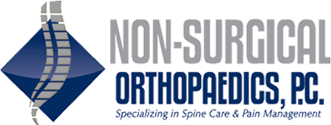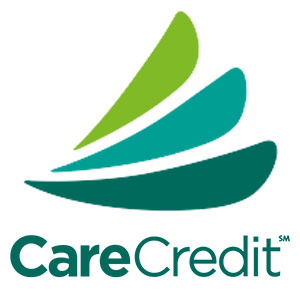What Can Regenerative Medicine Be Used For?

March 2021
Regenerative medicine can be used to promote joint, tendon, and ligament healing, reduce pain, and increase range of motion. Regenerative medicine is intended to boost the patient’s natural healing ability to levels it would otherwise be incapable of reaching. The strengthening of joints, increased collagen regeneration, and rapid healing of tendons and ligaments results in less chronic and acute pain and increased joint mobility.
How Does Regenerative Medicine Compare to Alternative Orthopaedic Treatments?
There are several attributes that make regenerative medicine a valuable treatment option for orthopaedic specialists and the patients they treat:
- It’s a non-surgical, non-invasive treatment option
- Injections can be performed multiple times to enhance results
- The treatment doesn’t carry the addiction risks of opiate-based pain medications
- There’s no lengthy and arduous recovery and rehabilitation period
- Many regenerative therapies are derived from the patient’s own blood or bone marrow
- Regenerative medicine injections are more affordable than many invasive orthopaedic surgical procedures
- It can be used in conjunction with other pain management methods in a holistic treatment plan
As with any orthopaedic treatment, it’s important to discuss your regenerative therapy options with a Board Certified specialist prior to committing to a round of injections. There’s no way for an orthopaedist to know whether regenerative medicine will be an effective alternative to surgery for your joint pain or back pain until a thorough diagnostic examine has been performed.
Is Regenerative Medicine Better Than Surgery?
When it comes to treating chronic and acute pain, significant orthopaedic condition like osteoarthritis or a serious sports injury, there’s not always a singular best treatment method.
Every patient has different needs and priorities. A worker in their 20s who suffers a severe joint injury could potentially have the highest chance for regaining most of their mobility by undergoing an invasive joint replacement surgery. A person in their 70s with back pain may not want to risk an invasive, complicated surgery given how long and difficult the recovery process might be.
Each scenario is different, and the ideal treatment methods may vary based on age, lifestyle, and level of pain. For some people regenerative medicine will be a better option than surgery, but for others surgery may be their best chance to make a full long-term recovery.
Is Regenerative Medicine an Alternative to Opiates or Steroid Injections?
A patient’s treatment plan may include several injections or medications for varying lengths of time and frequency depending on their condition and level of chronic or acute pain. A cervical epidural steroid injection could provide weeks or even months of pain relief, but they don’t work for every patient. Steroid injections may also have side effects and diminishing returns for some patients.
Your therapy regimen may consist of a steroid injection followed by a series of regenerative medicine injections combined with physical therapy and other medications. These treatments aren’t necessarily mutually exclusive. Steroid shots may reduce inflammation and relieve pain, but they won’t boost the body’s regenerative capabilities like a PRP injection or stem cell treatment.
What’s the Difference Between Platelet Rich Plasma and Stem Cell Therapy?
The Platelet Rich Plasma (PRP) that’s injected into a patient is derived from their own blood.
Your orthopaedic specialist will:
- Draw some blood
- Put your blood through centrifugation to separate red blood cells from the plasma and white blood cells
- Re-inject a concentrated mix of platelet-rich plasma using fluoroscopy or ultrasonic guidance for accurate targeting of the damage
The process takes an hour or two and the injection site will likely be sore for a week or two following the injection. Many patients are prescribed a course of several PRP injections. Patients often see peak joint strength improvement and tendon and ligament repair four to six months after their PRP injections.
Stem cell treatments, which contain high levels of growth factors, proteins, and cytokines, are derived from a difference source but are concentrated using a similar process.
Patients receiving Bone Marrow Aspirate Concentration (BMAC) have stem cells harvested from their own bone marrow re-injected into the targeted joint, ligaments, tendons or discs.
Amniotic stem cells are derived from the amniotic fluid surrounding a fetus. These stem cells are donated by consenting mothers who give birth via cesarian section. Amniotic fluid, which contains an extraordinary concentration of stem cells, is otherwise disposed of after a child’s birth if it is not donated for these stem cell treatments.
The best way to eliminate joint or orthopaedic injury pain is to heal the damage, and regenerative therapies like PRP and stem cell injections are designed to encourage that healing.
Are Regenerative Medicine Treatments Safe and How Do I Get One?
Regenerative medicine therapies such as PRP or stem cell injections are safe. Treatments derived from a patient’s own blood or bone marrow eliminates the risk for donor rejection, and amniotic stem cells pose no rejection risk.
Many patients are good candidates for regenerative medicine, including those with:
- Osteoarthritis
- All types of sports and accident injuries
- Joint pain
- Neck and back pain
- Hip pain
If you want to find out if regenerative medicine injections are right for you, or if your insurance covers these treatments, please contact the Board Certified physicians at Non-Surgical Orthopaedics by calling 770-421-1420.






